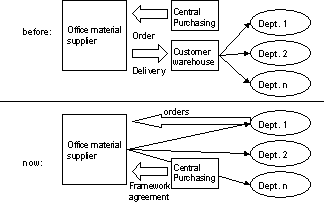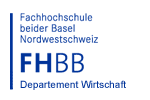E-fulfilment at Büro Fürrer
Büro-Fürrer is one of the leading stationery suppliers in Switzerland. For several years already, it has maintained electronic interfaces to its customers. The e-commerce solution available since the beginning of 1999 is characterised by a large range of functions and a marked capacity for individualisation. At present, over 30% of turnover is generated through this channel. In the fulfilment area, Büro-Fürrer has a strategic partnership with Sihl + Eika. Settlement is effected electronically to Payserv for the most part, but also via special customer interfaces. The company pursues a long-term e-business strategy that is proactively oriented to customers and market.
1. The company
The following sections describe the firm of Büro-Fürrer, its industry segment and products, intended target group and internet vision.
Background
Büro-Fürrer (BF) has been selling stationery for 115 years. Its strength is a modern outsourcing procurement concept for business customers. There is only one traditional shop on Zurich’s Münsterhof. Otherwise, BF conducts a purely B2B business. The company’s sales of office products amounted to approx. CHF 90 million in financial 2000/2001. BF has 25,000 active customers who make some 3000 orders a day. This translates into approximately 12,000 preproduction items per day. The sales organisation comprises an external sales force of 24, 5 key account managers and 28 office workers. BF conducts its business in the west of Switzerland through its subsidiary Proffice SA.
Mr. Grossenbacher, head of marketing, has been with the company for 16 years. Mr. Fries, head of e-commerce, had been with the company for six years when design on the e-shop began. The computing department employs eight people; four of them are responsible for infrastructure and four for programming. Special programmability is sometimes contracted out.
Industry
The stationery business is a stagnant market. Its business is the procurement of maintenance, repair and operations (MRO) goods with a large proportion of transactions made up of ultra-small quantities.
BF has 8500 stationery articles on stock and inventory availability of over 98%. Orders placed by 2 p.m. (e-shop: 5 p.m.) can be delivered the next day. Modern reusable boxes are used for packaging.
About ten years ago, this industry experienced a shift in customer behaviour, from the previous central purchasing to increasing decentralisation contained in general agreements and with various employees ordering their own small quantities (cf. Fig. 1.1). The prerequisites of this decentralisation are the simplicity of the order process, high inventory availability, quick delivery and constantly available and updated data.
Product
The range comprises 8500 stocked stationery articles, computer accessories, paper, printed materials and special customer articles. The main catalogue has 400 pages. If required, customised catalogues can be produced.
Target group
For the last 15 years, the sales strategy has focussed on business customers (B2B). Target customers are mid-sized and large businesses.
2. e-Business vision and e-business strategy
Eight years ago, a point-to-point system was introduced to assist customers in accessing the AS/400 order system where they could place orders via a terminal emulation.
Four years ago, the Büro-Fürrer management anticipated that the need for e-commerce solutions in the B2B business would arise in the foreseeable future. The aim it pursued was to accompany and support customers throughout the development process towards more marked internet-based transaction processing. The point-to-point connection based on terminal emulation already in use was expensive and time-consuming since it had to be installed at each individual location. According to the plans, all that should be needed to access the internet solution is a standard web browser that is by and large already installed on the relevant employees’ desktops. The aim of the e-business solution was realising the desk-to-desk concept for customers.
The resulting vision for the company was:
With its e-business application, Büro-Fürrer seeks to create the ideal degree of convenience for the customer in the area of ordering office supplies. This shifted the customer focus more to the centre. The solution is not operated according to technological opportunities but to the needs of the customer. The service offering was further extended by e-competence in order to be an innovative partner for customers in terms of optimising efficiency and effectiveness in the C-article area. The top management fully backs the solution and is closely involved in the day-to-day strategy-fixing process.
Strategy
The following sections describe BF’s e-business concept, its scope of services and its selected partners.
The company’s e-business concept
BF acts as an interface between stationery suppliers and B2B final consumers. On the purchasing side, there are EDI interfaces to the most important suppliers (cf. Fig. 2.1). These run fully integrated. BF orders are actuated by the ERP system. More than 50% of the purchasing volume is effected with its electronically-linked suppliers. Office suppliers tend to be conservative in their use of new technologies. In this scenario, BF is the intermediary linking traditional B2B business by EDI to the new e-business based on internet technology.

Fig. 2.1: Büro-Fürrer as the interface between the old and the new worlds
The acceptance among SMEs of Büro-Fürrer’s electronic purchasing channel is constantly rising. 22% of customers now use the sell-side solution at fuerrer-direct.ch. Large companies place high demands on electronic purchasing systems. Functionality, individuality and customisation options are key to business in this area. Large companies are increasingly switching from sell-side solutions to their own buy-side solutions. BF is active in this area through its implementation of Ariba catalogue formats. Thus, large customers are supported and accompanied in the process of implementing their own systems. The share of purchases via interfaces for buy-side solutions already constitutes 11% of all purchases.
In 1999 Büro-Fürrer decided to initially prioritise implementation of a sell-side solution for large companies (cf. Fig. 2.2). A second priority would then be followed by the offer of support for buy-side solutions. SMEs were to be also serviced on the sell-side. The develop in the area of marketplaces was to be pursued; however, no active efforts were undertaken to effect integration into any one marketplace. This can be traced back to the lack of any sense of customer need in this direction.
The euphoria with regard to marketplaces has largely dissipated in the last few months. Whereas discussions were still ongoing between manufacturers and customers a year ago – for example, whether they should link up to yellowworld – these discussions are seldom held nowadays. The focus is once again on one-to-one relationships. Fig 2.3 shows the current state of implementation at BF.
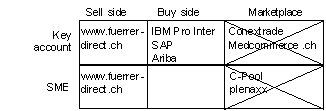
Fig. 2.3: Status of implementation of the e-business strategy today
From the start, the management viewed the fulfilment of e-commerce orders as the central point of the e-business concept. As the company says:
“Not only our front-end functions, but the complete fulfilment too. Order a product today and it’s on the desk the next day.”
Scope of services
BF’s e-commerce solution comprises a markedly customisable e-shop (sell-side) that is offered in German (www.fuerrer-direct.ch) and French (www.proffice-direct.ch). Besides the sell-side offering, it principally supports key accounts (e.g. ABB, Zurich, Ernst&Young, Roche) in operating desktop purchasing (outsourcing: the employees order directly via the BF shop) and so safeguarding their purchasing strategy. Over 20 flexible control functions (range authorisation etc.) can be individually defined for each employee. Information on stock levels, individual customer prices, order status, sales, address details etc. are available at all times. The solution supports the customer’s presales, sales and aftersales phases. The shop’s special services:
- Can be individualised at the user level
- Option of integration into customer-specific ERP systems
- Usability (search functions, navigation, design etc.)
- Functionalities (order lists, customised prices, display of monthly goods purchased by cost centre etc.)
Customer logos can be embedded in the application design making it look like an in-house application. Device-dependent accessories can be searched for (e.g. for toner cartridges matching a selected printer). Cost centres can be specifically defined per customer. Often, the added value for customers lies in the reduction of the offer and not in its diversity. The range breadth is defined at the company level.
The following list shows the facts and figures behind the e-shop:
- Active marketing since October 1999
- Full integration into BF’s ERP
- Over 3000 active e-commerce customers
- The share of e-commerce turnover is approx. 33%
- Over 10,000 e-commerce orders per month
- Customer awareness is very high
- Number of external sales force has doubled since the solution’s introduction
The external sales force informs the customers on the solution’s customisation options and optimisation to their internal processes.
Partners
This chapter deals with partners and the service concept offered in conjunction with them.
Fulfilment partners
Sihl + Eika of Dietlikon is a paper wholesaler with whom BF has entered a strategic alliance in the areas of logistics and distribution. Sihl + Eika’s range comprises a large selection of coated paper, new perspective in natural papers and envelopes for the graphics industry, paper for office and technical needs as well as a packaging materials and paper for digital printing. Its head offices are in Thalwil and has sales offices in Berne and Lausanne. Sihl + Eika offers the option of customer storage in Dintikon logistics centre. Paper or ready products can be held here for quick availability to the customer.
BUAG, of Baden, is a printer that markets customised printed goods (company logos) for B2B customers based on a just-in-time concept. The offer represents an enhancement to BF’s product range. Printing only goes ahead when the customer actually needs the paper (print-on-demand). The business comprises small quantities at somewhat higher prices than for mass orders. This means that the customers do not have to store that much paper themselves, leading to lower capital tie-up costs. Orders for printed matter are made by customers to BF and executed by BUAG.
ERP offerer/existing IT partner
In the backend area, BF deploys the Movex ERP system of Intentia Switzerland AG. The latter was founded in January 1989 in Zug as Movex AG. Its name is now Intentia Switzerland AG. Intentia’s Swiss branch has its head offices in Zug and employs 100 people. Intentia is the second-largest European ERP offerer. Movex is currently used by 75 companies in Switzerland with more than 4500 users.
Internet agency
Novanet Internet Consulting AG, Zurich, is an internet agency that has specialised in planning and designing database-supported internet solutions. Its multimedia services comprise the design and development of interactive websites and e-business systems. The company has 25 staff and over five years’ experience in the internet business.
Partner selection
Once the decision to introduce an e-commerce solution was passed, an intradepartmental project team was assembled and requirements specifications were created from the description of the scope of services. These were used as the basis for the call to tender.
A prerequisite was that the internet solution should run on the AS/400 platform already in use. Because of this requirement, it was decided to select IBM as equipment supplier and leading project partner. IBM works together with other agencies in the internet field. Five agencies presented their concepts based on the specifications. Novanet was selected as a partner for the project. For Novanet, a specialist in Websphere, the AS/400 was a new technology platform.
Following the first phase of the project, Novanet developed the e-shop in direct communication with BF. Since the middle of 2001, the project has been under the general leadership of IBM given that new investment in equipment had been made. BF no longer wanted to draw on services from an outside firm, but directly from IBM.
3. Fulfilment solution
The following sections explain BF’s fulfilment services with regard to just-in-time paper printing, delivery and payment.
Delivery [Delivery process]
Büro-Fürrer provides electronic processing of delivery on its own account. The physical delivery of products not sent by post is undertaken by Sihl + Eika for the whole of Switzerland.
BUAG is integrated into sales with a just-in-time concept and prints personalised printed matter and visiting cards to order. Electronic order processing is handled on a special Movex interface to BUAG via FTP. 80% of orders to BUAG are delivered to customers directly.
BF makes up the orders itself and supplies the addresses where the parcels are to be delivered. A BF warehouse in Dietikon makes up the parcels as per the order. Packing is based on a preproduction note listing the positions. The preproduction note is sent by Movex to a printer. Orders are assigned to trips. A Sihl + Eika vehicle arrives several times a day. The driver receives a delivery note and a route schedule (e.g. with customer wishes regarding delivery). Route planning is based on paper documents. There is still no electronic support in this area.
A new distribution centre will open next year in a building built by Sihl & Eika for BF. BF will be responsible for the centre’s interior design and has a long term rental agreement. Synergies are expected from the partnership as joint deliveries will be made from this new location. As soon as the building is up and running, the data will be transmitted electronically to partners. As a consequence, electronic route planning will also be possible in which the order details will be automatically transmitted. Requirements specifications were also produced by BF for this project. These are currently being put into practice by Sihl + Eika. The paper produced by Sihl + Eika is transported together with other BF products. This represents a strategic alliance.
Settlement [Payment solution]
Settlement is not part of the fuerrer-direct.ch internet solution. Payments are produced by the Movex ERP system. Some 40 customers receive their billing data electronically. They are two types of invoice depending on customer preferences.
- Single invoice customers: Each separate order is invoiced (once a week). The customer then receives three invoices if he places three orders.
- Collective invoice customers: A monthly invoice of goods received for the whole month.
The invoices can be individually configured meaning the customer can choose the preferred format (Fig. 1.5). Options here include: (1) Each individual order with each individual position, (2) organised according to cost centres, (3) only one monthly total or (4) recapitulation by individual cost centre.
BF sends both the single and the collective invoices on a CD to Payserv, which prints and dispatches the invoices.
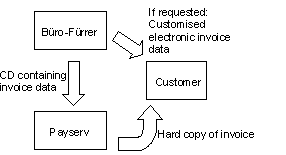
Fig. 3.1: Various possibilities of transfer settlement data
Some customers receive two different invoice formats. An aggregate monthly paper invoice is sent by Payserv. In addition, the customer has the option of getting detailed electronic statements himself from the fuerrer-direct.ch system. Most companies receive this information in one of the following formats: Excel or ASCII file, XML, EDIFACT. E-mail, FTP (send, get) and floppy disk are used as the main transmission channels.
A further settlement option is VISA Purchasing. The EDI of some years’ standing is based on single invoices. BF has also evaluated the use of PayNet (cf. specialist article). The result was that the service was too expensive with regard to both implementation and running costs. It was therefore not introduced.
10% of customers receive their invoices solely in electronic form. The files with the invoice data are manually prepared and checked by a member of staff. 90% of customer receive their invoices on paper (from Payserv). There are a number of individual interfaces to 30 to 40 customers. It is worth mentioning the provision of special ABAPs for import into SAP. The ABAP is supplied by BF if the customer does not have it already.
Besides electronic transfer, Büro-Fürrer prefers settlement of payment transactions via Payserv.
4. Implementation
The e-shop solution has been in operation since early 1999. The following sections explain the development process, the software solution and the entire system architecture.
Processes/Redesign
At the start of the internet project there was a three-cornered relationship in cooperation with the partners. This turned out to be awkward. The project organisation was changed later so that today IBM is the main contact and coordinates its partners’ services.
Software solution / Programming / System architecture
The rough concept behind the e-shop, the interface and the database design were developed by internal employees. Programming the e-shop on the net.Commerce platform was carried out by Novanet. The file concepts for the e-shop were created in close cooperation with Novanet. Novanet provided the necessary internet expertise for this. The e shop is based on an open script language for DB2 (Net.Data). The scripts developed for the e-shop is operating system-independent. They can run under RS6000, UNIX, OS/400 and Windows.
Websphere is an application server that has strongly focussed on Java in recent times. BF is checking whether the e-shop can be ported to Websphere.
Once the e-shop had already been successfully launched, a new ERP system (Movex) from Intentia was additionally introduced. The interfaces to Movex are loosely defined enabling ideal mutual fine-tuning of both systems (cf. Fig. 4.1). The IT department designed and programmed the interfaces between Movex and the e-shop.
Data exchanges regularly take place between the systems. The order data entering the e-shop are not saved in real-time in the ERP system but flow into a database designed specially for the purpose. These are synchronised with the Movex system several times an hour. No application logic from the ERP system is used.
The six employees in the IT department maintain the system and ensure day-to-day operation. The Movex ERP system is an easily adaptable standard application. The e-shop is a customised software package programmed specially for BF. All intervening interfaces were designed and programmed by BF. The Movex databases are loosely described and can be addressed directly at database level. Interface handling is one of the core duties of BF’s IT department. The Visual Basic applications for maintaining the additional data for the e-shop was also programmed by BF. Batch processing is written in RPG/Cobol.
Technical platform
OS/400 is used as the operating system throughout the system, both for the ERP and the internet shop. Data are stored in DB2/400 databases.
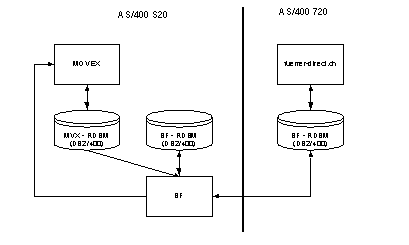
Fig. 4.1: Technical platform
Besides the ERP data from Movex (MVX-RDBM), a BF database is administered on the AS/400 S20. This additional database is used to store images and extra information (long texts, customer ranges, shop controls) for the webshop. BF functions control batch processes that perform the data synchronisation from/to the AS/400 720 internet system. The HTTP server integrated in the OS/400 serves as an application server on the internet-side (cf. Fig. 4.1).
The shop is based on IBM’s net.commerce/Websphere and runs on a stable AS/400 platform. Orders, range updates, customer changes etc. are transferred fully automatically in a batch process. Movex is used internally to administer and input orders. Besides this there are other applications developed in-house (BF) that fulfil the following functions:
- Master data management (all data that are not managed in MVX (long texts, images, user shop controls, individual customer ranges etc.)
- Transfer of master data to the e-shop (nightly batch job)
- Transfer of activity data to the e-shop (every ten minutes the orders on hand and the stocks are transmitted to the internet system. History data are transmitted once a week since billing only takes place at this interval)
- Order collection from the e-shop and integration into MVX via the Movex batch input interface
In order to guarantee system security, the e-shop is in a demilitarised zone (DMZ) and thus separated from the remaining system.
5. Operation
Over 3000 customers regularly use the shop to process their office supply needs.
Maintenance
The e-shop is hosted by Büro-Fürrer itself. Hardware support is assumed by IBM Switzerland. The e-shop is supported by Novanet and, if required, can be enhanced with additional functionality. Operating problems in all systems are solved by Büro-Fürrer employees wherever possible.
Profitability
Over 30% of the annual turnover of CHF 90 million (based on 6000 orders per month) are now automatically processed via the shop. From 1999 to the present date, approx. CHF 1.6 million has been disbursed in external costs for the development of the e-shop. This sum includes equipment, software and running costs. The management assumes that the same amount again has been incurred through internal costs. Marketing was especially cost-intensive.
It is difficult to apportion profitability to the internet channel. The e-shop is part of operations. In this sense it did not represent a new sales channel for Büro-Fürrer but the replacement for the existing point-to-point system. It is assumed that this modern customer interface has greatly contributed to the continuing retention of customers and even helped acquire some others. It enables process cost savings both at Büro-Fürrer and customers’. The e-shop today forms an important part of operations; it would be difficult to imagine business without it.
6. Success factors
The following sections lists the factors that are mainly responsible for the success of the Büro-Fürrer internet solution.
General factors
The e-shop solution is supported by the entire company and not just by a small team of specialists. The specialists also identify with the internet solution. Call centre employees work simultaneously on the hotline for e-shop support. The solution has never been a threat to existing jobs. The electronic channel has grown in the course of time. The internal IT department is also completely behind the internet solution and were instrumental in participation in the development.
“Our employees and our customers are motivated e-fans.”
The following factors are also responsible for the success:
- High degree of customisation
- Availability check at order input
- Capable external sales force, onsite customer training
- Improved processes: 80% of orders enter the system after synchronisation with the plausibility checks without any manual interference
The solution’s specialities
One of the solution’s special features is the connection to SAP B2B, Ariba and IBM Pro Inter. This means that key accounts, above all, are ideally served with electronic information. The e-shop has stored compatibility lists which allows matching accessories for a specific printer to be displayed, for example. The ERP system cannot do this.
There are a number of further special features:
- Tailored shopping lists
- Individual shop (individual customer catalogues, individual prices)
- Current overview of availability and delivery status
- Automated electronic billing (download settlement data)
Unique Selling Proposition
The USP of Büro-Fürrer’s e-business solution is abundant gearing to one-to-one customer relationships. Individual needs are clarified by the external sales force before being implemented for each customer specifically. Through the exclusive focus on the customer’s organisational and process needs, a higher level of customisation is attained.
Changes
The introduction of e-commerce in the shape of the e-shop was not a revolutionary development. The point-to-point system that existed for years with the help of terminal emulation has smoothly passed into the new web system.
The job profiles of employees’ in the call centre who take orders by telephone has changed dramatically. Most call centre employees are trained stationers who now have additional internet skills (job enrichment).
Difficulties
One difficulty caused by the high degree of customisation is management of its complexity because of the many different electronic interfaces. Personal contact with customers is decreasing with use of the e-shop. This is acceptable since office material is not a very sophisticated product. The external sales force can compensate for this somewhat through good advice. In general, it can be said dependency on technology has grown.
Benefits
Benefits are the topicality of information, individual prices, a reduction in errors, cost savings and efficient order processing (outsourcing to customers). In addition, the consistent strategic orientation to new technologies has led to something of a boost in optimism in the company. The e-shop acts in this way as a “motivator in the firm”.
Lessons learned
One aspect of the internet project was that particular significance was accorded to the project management, in particular to coordinating the various partners. Originally, as equipment partner, IBM was BF’s main contact. During the project, Novanet was added as an immediate partner providing the software for the web development. This resulted in a complicated three-way relationship.
The right strategy, pursued to this day, is by keeping computing expertise within the company and not outsourcing it. In retrospect, the management views this as a great advantage since internal employees know the industry and the customers’ needs. Partial outsourcing for dedicated tasks is unavoidable, however. To quote the head of computing: “We couldn’t have programmed the internet shop as well.”
One thing that’s not true at BF is that, “With e-commerce you can save marketing costs”. Savings that e-commerce may produce on the transaction processing side must be compensated by a large external sales force. Since the introduction of the e-shop the number of external sales workers has doubled.
The key aspects of operations are:
- Allocation of resources (e.g. marketing, external sales force)
- Acceptance throughout the company
- Continuous development (planning, costs)

